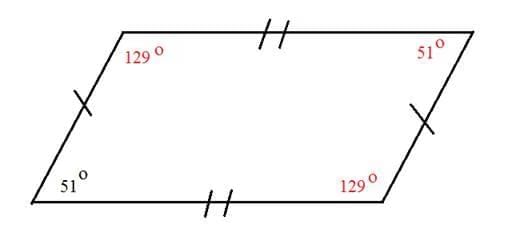MCQ (with Solutions): Quadrilaterals | Mathematics Class 8- New NCERT (Ganita Prakash) PDF Download
Q1. Which of the following quadrilaterals has two pairs of adjacent sides equal and diagonals intersecting at right angles?
(i) square
(ii) rhombus
(iii) kite
(iv) rectangle.
Q2. Which of the following quadrilaterals has a pair of opposite sides parallel?
(i) rhombus
(ii) trapezium
(iii) kite
(iv) rectangle.
Q3. Which of the following quadrilaterals is a regular quadrilateral?
(i) rectangle
(ii) square
(iii) rhombus
(iv) kite.
Q4. Which of the quadrilaterals has all angles as right angles, opposite sides equal and diagonals bisect each other?
(i) rectangle
(ii) rhombus
(iii) square
(iv) none of these.
Q5. Which of the parallelograms has all sides equal and diagonals bisect each other at a right angle?
(i) square
(ii) rectangle
(iii) rhombus
(iv) trapezium.
Q6. In an isosceles parallelogram, we have:
(i) pair of parallel sides as equal
(ii) pair of non-parallel sides as equal
(iii) pair of non-parallel sides as perpendicular
(iv) none of these.
Q7. Which of the following is true the adjacent angles of a parallelogram?
(i) they are equal to each other
(ii) they are complementary angles
(iii) they are supplementary angles
(iv) none of these.
Q8. The sides of a pentagon are produced in order. Which of the following is the sum of its exterior angles?
(i) 540°
(ii) 180°
(iii) 720°
(iv) 360°
Q9. Which of the following is a formula to find the sum of interior angles of a quadrilaters of n-sides?


(iv) (n – 2) × 180°
Q10. Diagonals of which of the following quadrilaterals do not bisect it into two congruent triangles?(i) rhombus
(ii) trapezium
(iii) square
(iv) rectangle.
Answers
1. (iii)
2. (ii)
3. (ii)
4. (i)
5. (iii)
6. (ii)
7. (iii)
 Supplementary angles
Supplementary angles
8. (iv)
9. (iv)
10. (ii)
|
26 videos|177 docs|11 tests
|
FAQs on MCQ (with Solutions): Quadrilaterals - Mathematics Class 8- New NCERT (Ganita Prakash)
| 1. What are the properties of a quadrilateral? |  |
| 2. How can we classify quadrilaterals based on their sides and angles? |  |
| 3. What is the formula to find the area of a quadrilateral? |  |
| 4. What is the difference between convex and concave quadrilaterals? |  |
| 5. How do you calculate the perimeter of a quadrilateral? |  |
















